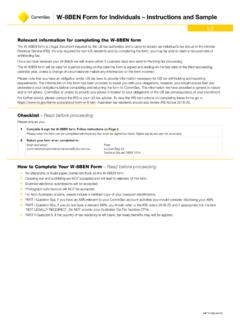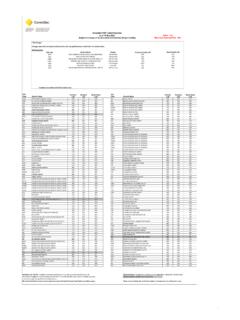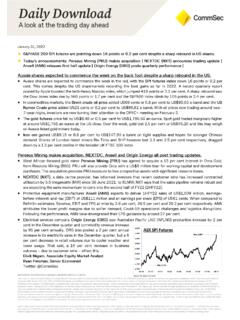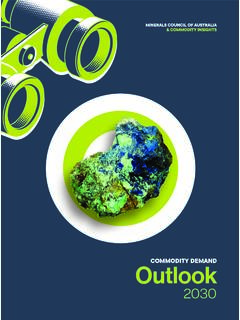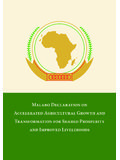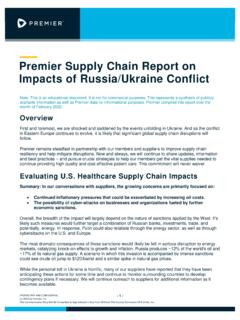Transcription of Economics | January 4, 2022 Year in Review. Year in Preview
1 Economics | January 4, 2022. Year in Review. Year in Preview Year in Review 2021. Year in Preview 2022. Now that 2021 has been farewelled, it is an opportune time to reflect on the past year and look ahead to 2022. Last year we wrote: As we enter 2021, it is clear that COVID-19 still dominates the landscape. The bad news is that Europe and the US are experiencing second and third waves of the virus, driving case numbers to record highs and necessitating fresh lockdowns. The good news is that effective vaccines are starting to be distributed across the globe. The economic outlook will clearly be dictated by the virus and how quickly the vaccines can stem case numbers and allow economies to start repairing.. And that pretty well sums it up. It was another year dominated by the pandemic the Delta strain and now Omicron. But the take-up of vaccines has indeed allowed economies to re-open.
2 And Australians have led from the front in getting the vaccines, thus allowing us to enter the Living with Covid' stage of the process. Omicron is a new challenge and most likely there will be fresh challenges awaiting in 2022. With economies re-opening, central banks and governments are starting the process of winding back the extraordinary amount of financial and monetary stimulus. It is not just the fact that a process of normalisation' is underway. There is also the concern about inflation. Shutdowns and lockdowns hit manufacturing production, reducing the amount of available goods. But consumers are back in the malls and more businesses are back online, wanting the very raw materials and finished goods that are in relative short supply. As a result, prices are rising. Central banks initially thought that the spike in consumer prices would be temporary, owing to supply disruptions and pent-up demand in lockdowns.
3 But policy chiefs, including US Federal Reserve Chair Jerome Powell, have since IMPORTANT INFORMATION AND DISCLAIMER FOR RETAIL CLIENTS. The Economic Insights Series provides general market-related commentary on Australian macroeconomic themes that have been selected for coverage by the Commonwealth Securities Limited (CommSec) Chief Economist. Economic Insights are not intended to be investment research reports. This report has been prepared without taking into account your objectives, financial situation or needs. It is not to be construed as a solicitation or an offer to buy or sell any securities or financial instruments, or as a recommendation and/or investment advice. Before acting on the information in this report, you should consider the appropriateness and suitability of the information, having regard to your own objectives, financial situation and needs and, if necessary, seek appropriate professional of financial advice.
4 CommSec believes that the information in this report is correct and any opinions, conclusions or recommendations are reasonably held or made based on information available at the time of its compilation, but no representation or warranty is made as to the accuracy, reliability or completeness of any statements made in this report. Any opinions, conclusions or recommendations set forth in this report are subject to change without notice and may differ or be contrary to the opinions, conclusions or recommendations expressed by any other member of the Commonwealth Bank of Australia group of companies. CommSec is under no obligation to, and does not, update or keep current the information contained in this report. Neither Commonwealth Bank of Australia nor any of its affiliates or subsidiaries accepts liability for loss or damage arising out of the use of all or any part of this report.
5 All material presented in this report, unless specifically indicated otherwise, is under copyright of CommSec. This report is approved and distributed in Australia by Commonwealth Securities Limited ABN 60 067 254 399, a wholly owned but not guaranteed subsidiary of Commonwealth Bank of Australia ABN 48 123 123 124. This report is not directed to, nor intended for distribution to or use by, any person or entity who is a citizen or resident of, or located in, any locality, state, country or other jurisdiction where such distribution, publication, availability or use would be contrary to law or regulation or that would subject any entity within the Commonwealth Bank group of companies to any registration or licensing requirement within such jurisdiction. Economic Insights: Year in Review. Year in Preview backpedalled from labelling price rises as transitory with annual inflation rates hitting multi-decade highs - well in excess of central bank targets of around 2 per cent.
6 Some central banks like New Zealand, Norway and the UK have already lifted interest rates. Other central banks like the US Federal Reserve are winding back bond purchases and talking about rate hikes in 2022. Still others like the Australian Reserve Bank are winding back some temporary stimulus measures but believe rate hikes are still some time away. Like all things affected by the pandemic, central banks can't be sure they have the right' approach. One thing that has tended to change relatively frequently is economic and financial forecasts. The need for flexibility in the pandemic has been well demonstrated over the past year. The cash rate remains at a record low of per cent. The Reserve Bank doesn't see that changing until 2023 at the earliest. But Commonwealth Bank (CBA) Group economists believe the necessary pre-requisites for a rate hike.
7 Covering inflation, wages and unemployment will be met in the December quarter of 2022. The Economy The Australian economy is in good shape heading into 2022. The economy may have grown per cent in 2021 and is expected to lift another per cent in 2022. ( Normal' growth is around per cent). The jobless rate stands at per cent; annual underlying inflation is per cent; and annual wage growth stands at per cent. The Reserve Bank wants to see inflation sustainably between 2-3 per cent; unemployment near 4 per cent and wage growth near 3 per cent before lifting interest rates. Interest rates In terms of Reserve Bank (RBA) monetary policy settings, final drawings for the Reserve Bank Term Funding Facility occurred on June 30. In August, the RBA said it would purchase government securities at the rate of $5 billion a week until early September and then $4 billion a week until at least mid November.
8 In September the RBA said it would purchase government securities at the rate of $4 billion a week and to continue the purchases at this rate until at least mid-February 2022. In November the RBA discontinued the target of 10 basis points for the April 2024 Australian Government bond. The era of super-low interest rates continues. The cash rate is per cent. Ninety-day bill yields lifted from per cent to just per cent over 2021. Extraordinary. Ten-year government bond yields have been the biggest mover over 2021, up from per cent to per cent (range per cent). The lift in yields reflects global and domestic economic recoveries and the lift in global and domestic inflation. Inflation, the job market and the coronavirus will remain the key drivers of rates in 2022. January 4, 2022 | 2. Economic Insights: Year in Review. Year in Preview Exchange rates The Aussie dollar is currently near cents after starting the year near US77 cents (range US70-80 cents in 2021).
9 While the Aussie lost around 6 per cent against the US dollar over the year, this reflects a stronger greenback rather than a weaker Aussie. The Aussie dollar rose per cent against the yen and rose per cent against the Euro but was flat against the New Zealand dollar. The weaker Aussie against the greenback has been despite strong Australian-side fundamentals solid economy, higher commodity prices, consistent trade surpluses and record current account surplus. The lower dollar is providing valuable stimulus for Aussie businesses, especially exporters. commodities Reflecting the re-opening of developed economies, demand for raw materials lifted over 2021, especially in the latter part of the year. As a result commodity prices have been healthy. That said, industrial metals prices have been volatile in back end of 2021 due to China's regulatory crackdown and property crisis along with US.
10 Dollar strength. While the price of iron ore receded from the record high of US$ a tonne recorded in mid-May, the current price near US$119 a tonne is still well above long-term average and the US$15-20 a tonne cost of production, although down per cent in 2021. Gold fell per cent in 2021; base metal prices rose per cent; oil rose 55 per cent; natural gas rose per cent; thermal coal rose per cent; and coking coal rose per cent. The CommSec daily commodity index lifted per cent over 2021 with broad-based price gains across energy, metals and agricultural commodities . The CRB futures index rose by per cent while the Aussie dollar fell per cent against the greenback. Over the year to November the Reserve Bank commodity index increased by 36 per cent in SDR terms, led by higher liquefied natural gas (LNG), coking coal and thermal coal prices.


